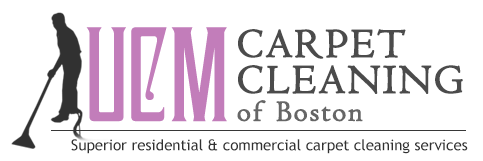Breathing Better in Your Home
Most of us enjoy breathing sweet, clean air. But for the many people who suffer from allergies and respiratory problems, clean air is a necessity, not an indulgence. Fortunately, homeowners these days have a wide range of options that can help them breathe more easily and comfortably in the home.
The traditional furnace air filter isn't designed to clean air much at all. Its only function is to keep large particles like hair and debris from damaging the furnace blower. These large particles are rarely the source of human breathing difficulty.
The main advantage of traditional filters is that they provide low-cost protection to the heating and cooling equipment. But beware, if you don't change these furnace filters every month or two, they will become clogged and eventually drastically reduce your furnace's air supply. At the very least, clogged filters will make your furnace work harder and waste energy. At worse, it will cause "cycling," which can ruin the blower motor.
Cycling occurs when your furnace overheats. The furnace is equipped with a safety feature which automatically shuts it off when it gets too hot. Typically, overheating occurs when the furnace doesn't get enough air flow. Air flow can be hindered by a dirty filter or by furniture blocking return registers. After the furnace cools somewhat, it automatically turns back on. A minute or so later, it overheats and cuts off again. This on-and-off cycling is very hard on the motor. It will also usually limit the furnace's ability to heat the house on especially cold days.
While traditional filters cost less than $2, there are many fancier filters on the market today that filter out enough particulate matter to help humans breathe better. In general, the more costly the filter, the more dust it snags out of the air stream. Costing anywhere from $7 to $100, sophisticated filters can pull out up to five times as much dust as a traditional filter.
Whenever you try a new filter, make sure your furnace doesn't start cycling. After installing the new filter, turn the furnace on and listen carefully. If it cuts off after a few minutes and it does so before the house has reached the temperature you indicated on the thermostat, you may have a problem. If the pattern repeats, check to see if the return air registers around the house are obstructed. If the registers are clear but the furnace keeps cycling, switch back to your original filters.
If you aren't ready to settle for dirty air, ask a professional if your furnace can be modified to accommodate better filters or consider installing an electronic air cleaner. The more advanced the filter, the smaller the particles of dust it can trap. Household dust typically includes large quantities of hair, skin and pollen. It also includes lots of dust mites.
Dust mites are microscopic bugs that look like a cross between Godzilla and a tick -- nasty critters -- and the typical home has millions of them. Fortunately, they are too small to see with the naked eye. If you could see them, you'd probably feel compelled to move out. While the dust mites can be very irritating to the lungs, their dung and carcasses can be even worse.
Generally, the better the air filtering or cleaning system, the more dust mites and dust mite debris that is filtered out of the air. The most impressive filters use electrostatic energy to help capture about 5 times as many particles as a traditional filter. These filters have plastic or metal strips that generate static electricity when the air blows over them. In turn, the static electricity attracts very tiny particles.
As with the basic filter, it is important to change all filters regularly. Some filters are reusable. With these, take them outside and hose them down once every month or two. In the winter, use a deep laundry sink. Many people buy these filters thinking they will save money. But, after cleaning them a couple of times, they decide it's too much bother and switch back to disposables. The choice is yours, but make sure you don't allow dirty filters to stay in your furnace.
Electronic air cleaners, which can extract 30 times as much dust as ordinary filters, cost a lot more. In fact, a professionally installed air cleaner costs $500 to $700, including installation.
While this is a substantial amount of money, it's worth every penny if it offers significant breathing relief to one or more people in your household. But, if the price is too steep for you, portable units can be purchased for far less. Of course, the smaller units clean just the air in one room - much like a window air conditioner cools only one room.
Electronic air cleaners only need to be cleaned once a year or so because they incinerate the trapped dust. The human body is well equipped to handle breathing dirty air, so most people have no problem breathing normal household air - dust mites and all. But if someone in your household suffers from asthma, chronic bronchitis, emphysema, allergies or other respiratory problems, you should investigate ways to make the air in your home more breathable.
How can exposure to allergens be minimized?
- Complete avoidance of whatever triggers the allergic reaction is the best treatment. For example, if somebody is allergic to cats, they should not own or care for cats. Complete avoidance of allergenic pollen or mold may even mean moving to a place where the offending substance does not grow and where it is not present in the air. But even this extreme solution may offer only temporary relief since a person who is sensitive to one allergen may begin developing allergies to new allergens after repeated exposure. Physician advice should be sought before making decisions about relocation as a means to avoid allergen exposure.
- Avoid places where the allergen is present. For example if somebody is allergic to pollen, they should stay indoors in the morning when pollen levels are highest. They may also want to vacation in areas where pollen levels are low, like the seashore
- Mold allergens can be difficult to avoid, but some steps can be taken to reduce exposure to them. First, the allergy sufferer should avoid places where molds tend to be concentrated. The lawn should be mowed and leaves should be raked up, but someone other than the allergic person should do these chores.
- Try to control moisture around the house since high humidity levels encourage the growth of dust mites. In addition, moisture leads to fungus growth, another allergen. Around the home, a dehumidifier will help dry out the basement, but the water extracted from the air must be removed frequently to prevent mold growth in the machine.
- Use central air-conditioning to help control humidity levels
- Monitor humidity to see if relative humidity is a problem and if control efforts are working.
- Put impermeable covers on bedding (mattresses and pillows) of people with mite allergies and remove fleecy textiles.
- Keep the house clean. House dust mites, pollens, animal dander, cockroaches, and other allergy-causing agents can be reduced, although not eliminated, through regular cleaning.
- Use high-efficiency air filters installed in air-handling systems to help reduce the levels of some particulate agents in indoor air. Be sure they are the right size and avoid systems that add pollutants such as ozone and chemicals to the air.
- Before buying a room-size filtering device, the patient should rent one and use it in a closed room (the bedroom, for instance) for a month or two to see whether allergy symptoms diminish. The airflow should be sufficient to exchange the air in the room five or six times per hour; therefore, the size and efficiency of the filtering device should be determined in part by the size of the room. Check for independent validation of the air cleaner performance.
Persons with allergies should be wary of exaggerated claims for appliances that cannot really clean the air. Very small air cleaners cannot remove dust and pollen, and no air purifier can prevent viral or bacterial diseases such as influenza, pneumonia, or tuberculosis. Buyers of electrostatic precipitators should compare the machine's ozone output with Federal standards. Ozone can irritate the nose and airways of persons with allergies, especially those with asthma, and can increase the allergy symptoms. - Install and use a central vacuum system that exhausts air outside. If you do not have this, use a vacuum cleaner equipped with a HEPA filter to help reduce the spread of indoor allergens.
- Avoiding Irritants: People with allergies often are less able to tolerate exposure to irritants. Air fresheners, smoke, and hairsprays are examples of common indoor irritants that some people with allergies must avoid.










